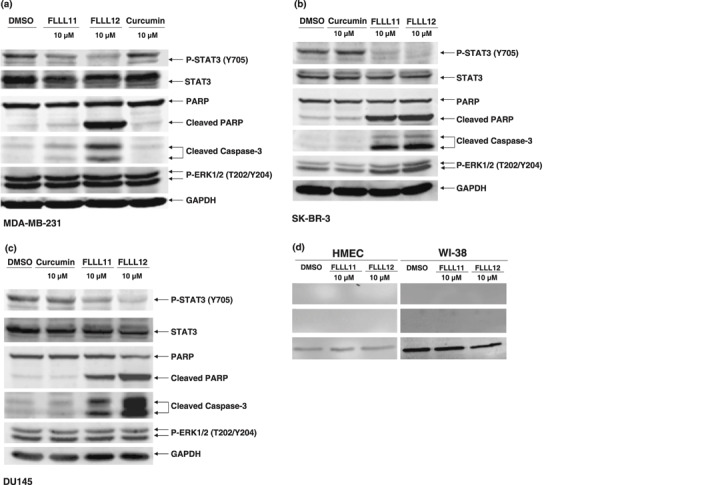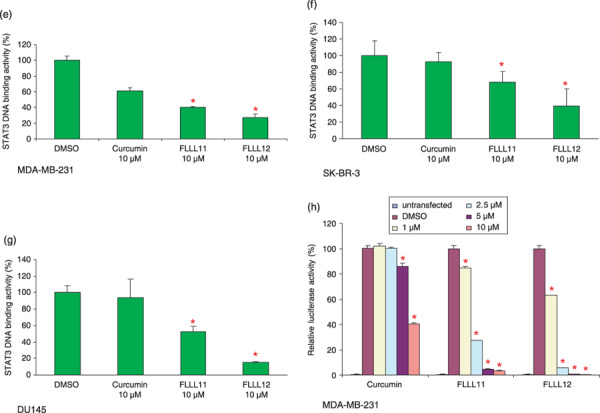Figure 3.


FLLL11 and FLLL12 inhibit STAT 3 phosphorylation in (a) MDA‐MB‐231, (b) SK‐BR‐3, and (c) DU145 breast and prostate cancer cells. Cells were treated for 24 h. Membranes were blotted with phospho‐specific STAT3, phospho‐independent STAT3, phospho‐specific ERK1/2, cleaved poly (ADP‐ribose) polymerase (PARP), cleaved caspase‐3, and GAPDH antibodies. (d) FLLL11 and FLLL12 (10 µmol/L) induce cleaved PARP and cleaved caspase‐3 in breast cancer cells but not in human mammary epithelial cells (HMEC) and WI‐38 normal human lung fibroblasts. The inhibitory effects of FLLL11 and FLLL12 on STAT3 DNA binding activity in (e) MDA‐MB‐231 (f), SK‐BR‐3, and (g) DU145 cancer cells. The nuclear extracts were analyzed for STAT3 DNA binding activity using STAT3‐specific TransFactor kit. Statistical significance (P < 0.01) relative to the DMSO vehicle control is designated by an asterisk. (h) The inhibitory effect of FLLL11 and FLLL12 on STAT3‐dependent transcriptional activity was analyzed in MDA‐MB‐231 breast cancer cells that stably integrate the STAT3‐dependent luciferase reporter construct. The data were subsequently normalized and presented here as percentages of the DMSO vehicle control. Asterisks denote statistically significant (P < 0.01) decreases in luciferase activity.
